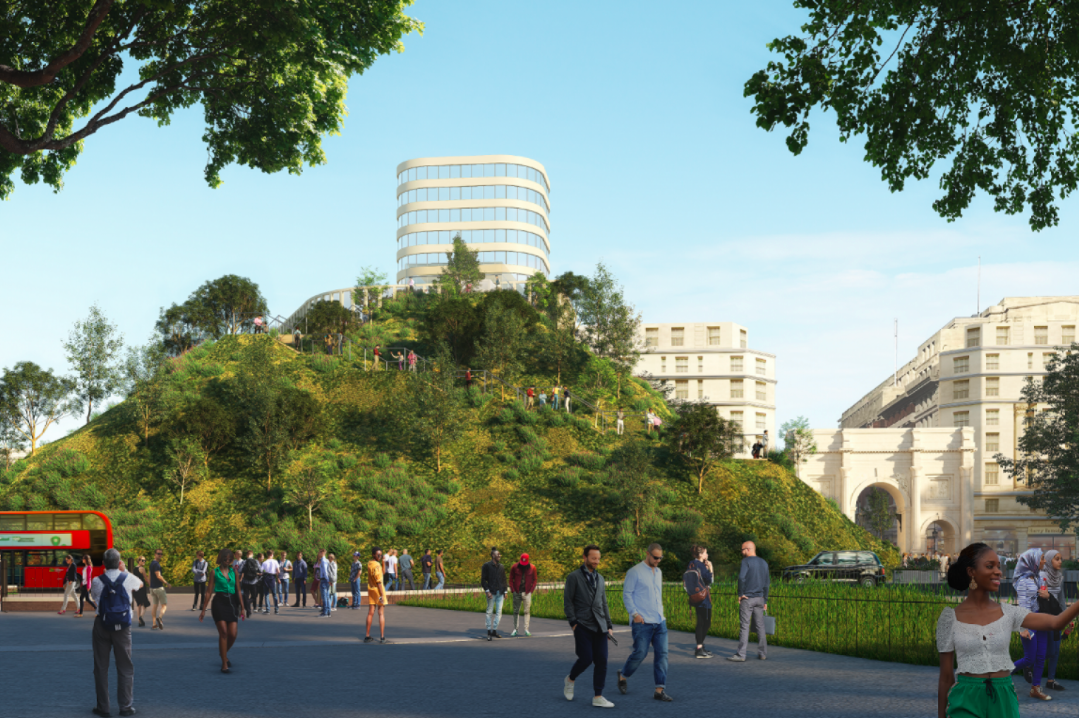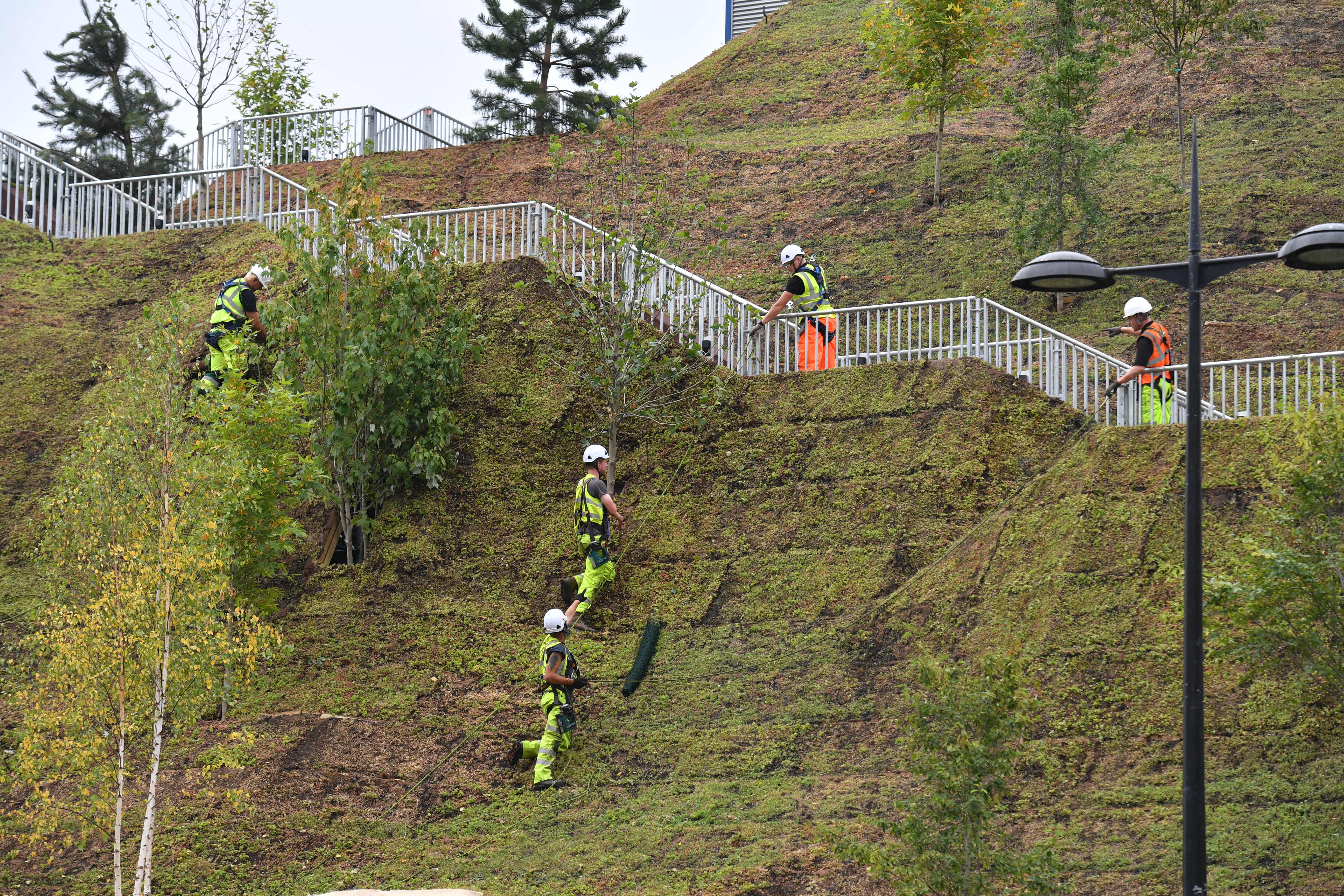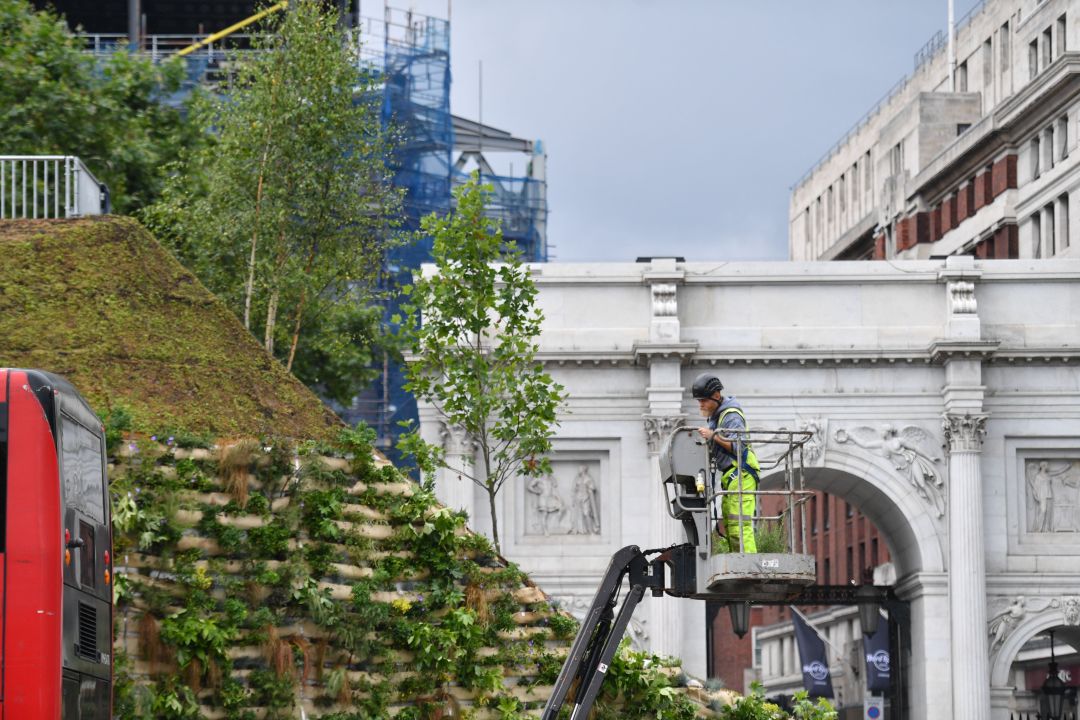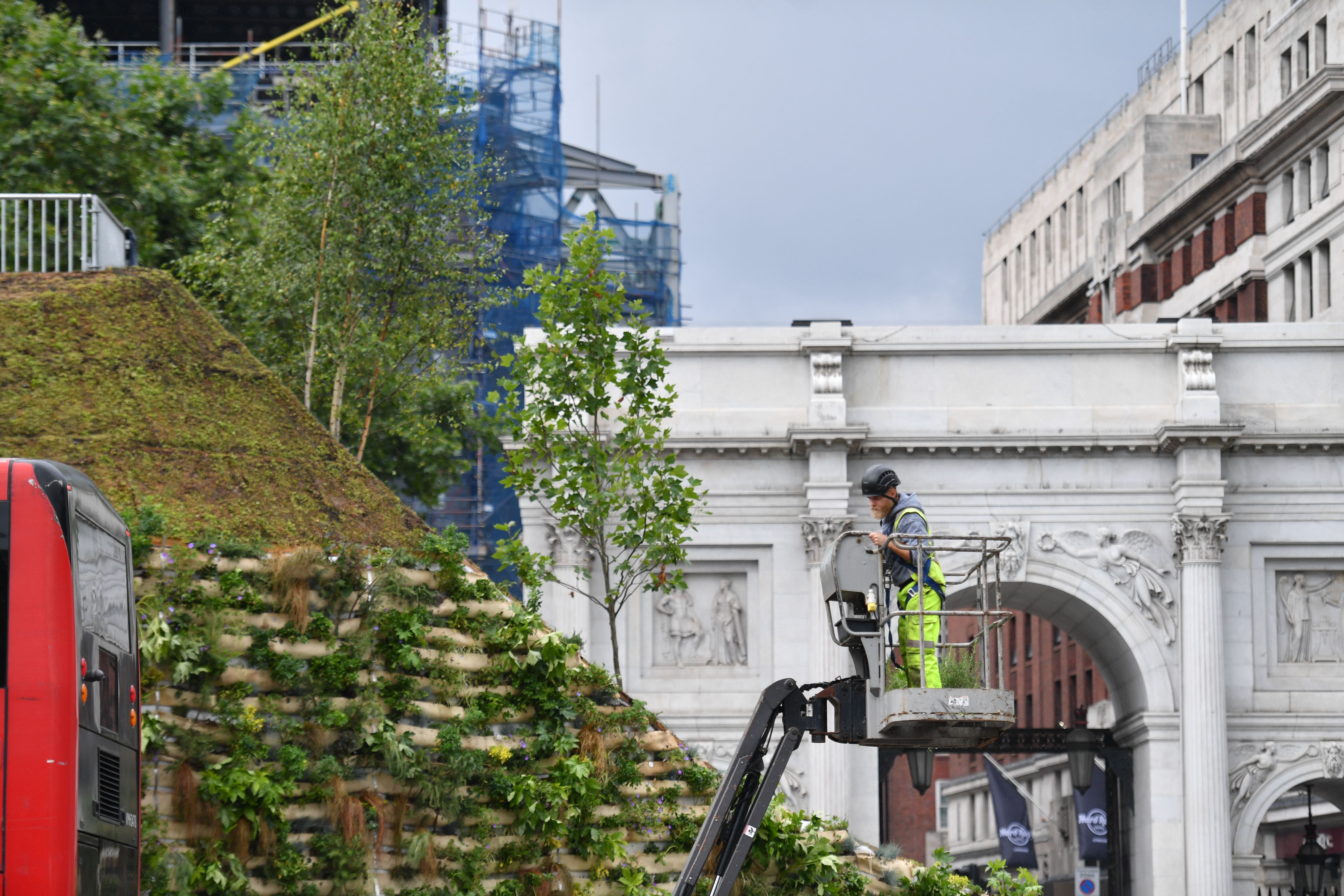The pictures show a rough, angular knoll of turf heaped on a noisy roundabout at the junction of Park Lane and Oxford Street. This is ‘Marble Arch mound’ created by Westminster Council to revive interest in a chaotic motorised intersection at the northeast corner of Hyde Park. Now, after two days of unhappy punters trudging up the thing, the artificial hill has been closed until next month.
The senior tenant of the roundabout is the white triumphal arch designed by John Nash in 1827 but the newly arrived mound seems to want visitors to ignore its august neighbour. The website gives no details about Nash’s structure which originally stood outside Buckingham Palace and was moved to its current home in 1851.
It’s unclear what artistic field the mound belongs to. Is it a piece of sculpture or a work of architecture? It may be a playful essay in conceptualism or a feat of landscape gardening in the brutalist tradition. Philistines have likened it to a heap of spoil from a tin mine that was due to shore up the downstream bank of a threatened dam.
To be more generous, its bulky proportions recall the medieval barrows of mud heaped up by serfs to form the elevated foundations of a castle. The creators of the mound have grander ideas. They see their 25 metre-high tumulus as an iconic landmark that will generate ‘renewed excitement’ and offer ‘views never seen before’.

Perhaps they’re right. Perhaps a new wonder of the world has appeared in our midst. The mound shares certain qualities with architectural glories elsewhere. It’s a unified entity shaped from a single material with a broad base that rises skywards and breaks the horizon with a memorable silhouette. This places it in the same category as the Great Pyramid and the Eiffel Tower. But let’s be frank. The Mound hasn’t the severe and imposing grandeur of the Great Pyramid. And it can’t hope to match the Eiffel Tower’s feminine delicacy and soaring elegance.
The visitor who arrives from Park Lane will find it hard to spot the mound at all. Its grass-covered immensity fails to rise above the tops of the trees growing to maturity in Hyde Park. Close up, it seems disappointingly small, (but this is a fault common to world-class attractions). Approaching it, one notices that iron walkways have been cut into its steep flanks to enable visitors to ascend the summit. The entrance is manned by friendly staff who are far from busy. Everyone who enters the site must first purge their hands with sanitiser because the Mound, being a thoroughly modern attraction, is riddled with Covid.

At the start of the climb, one instantly notices a lack of solidity underfoot. The mighty earthworks seem to quiver and tremble. And it becomes apparent that the mound is not what it seems. Rather than a lumpen deposit of mud, the structure is a mass of invisible scaffolding covered by a skin of turf panels. It’s a hoax. Any resemblance to an ancient burial site or an Iron Age fort is entirely imaginary.
It takes less than 30 seconds to climb the steel steps and to emerge onto the poop deck and the ‘views never seen before’. You’ll need a telescope to pick out anything interesting. To the east lies Oxford Street where morose shoppers climb aboard snorting buses. To the southwest is Hyde Park with its populations of sweating joggers and dog-chasing squirrels. And that’s about it. When the attraction becomes fully operational, visitors will be able to ‘descend into the heart of the mound’ and sample the treasures available at ‘the café, shop and exhibition space’.
So that’s it. The mound is a glorified step-ladder covered in moss with a tat-shop inside. Clearly the architects have offered too much and delivered too little. And yet the folly serves a purpose. By drawing attention to the wretched island on which it stands, the mound may accelerate the full-scale redevelopment of the area and the creation of a setting fit for Nash’s Marble Arch.








Comments